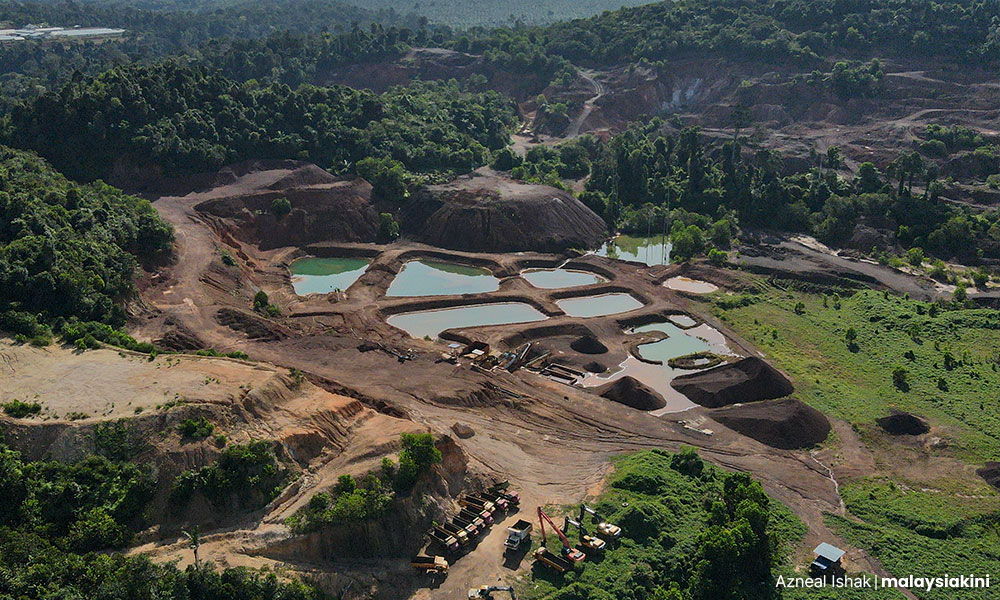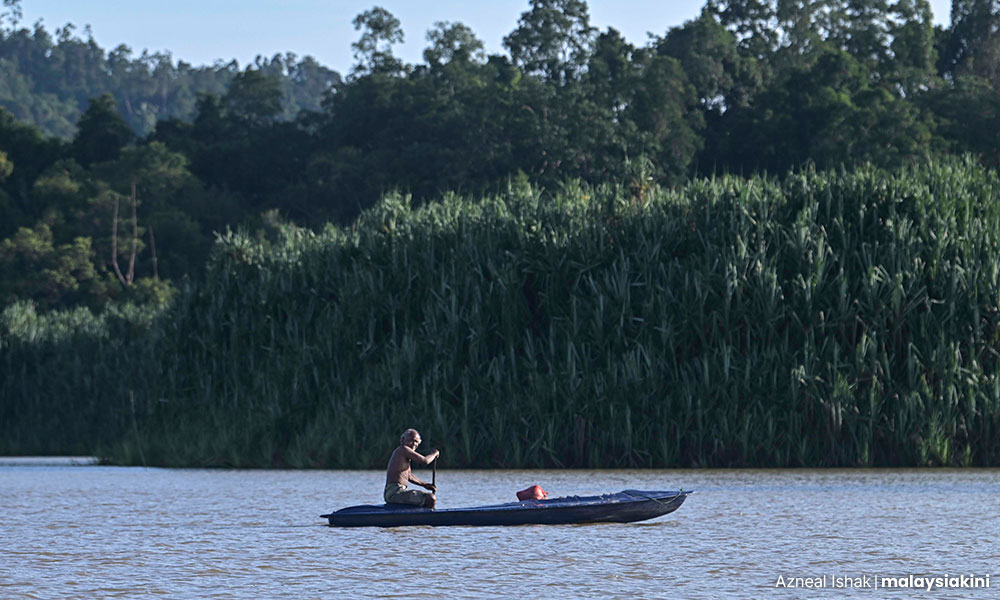Lying idle beside a small hill in Tasik Chini, Pahang, were 10 excavators and earthmovers overlooking the second largest natural freshwater lake in Peninsular Malaysia.
These are the remnants of massive mining activities which have left the land pockmarked with massive pits the size of football fields.
Mining activities ceased in December last year, several months after protests by the Pahang regent.
For the Orang Asli community in the Chini vicinity, the damage done to the lake by logging and mining since 2009 has been catastrophic as it affected their source of food, water and livelihood.
However, now that the mining has stopped, Malaysiakini visited several villages in the area to determine whether the lives of the villagers have changed for the better.
Water pollution
Kampung Gumum - the eponymous Orang Asli village of the famed Seri Gumum Dragon legend - is a Jakun village located east of Tasik Chini.

For generations, this village had relied on Tasik Chini's pristine waters for subsistence. That changed when mining activities began. Now that it had stopped, villagers said recovery had only begun.
Villager Lim Bung Kiang, 41, relied on Tasik Chini for fishing. According to him, the water was once so clean that villagers could drink from it.
"Before logging and mining started here, we could even drink straight from the lake when we went fishing.
"But now, we have to bring our own drinking water from home," said Lim.
What used to be mined nearby remains unclear. According to the Environmental Impact Assessment reports for the legal mines, manganese and "other minerals" were being sought.

Lim's claims were echoed by other villagers who spoke to Malaysiakini. Some claimed that they didn't dare to use the lake water even for cleaning, given the state it in is today.
"Not everyone can use the lake water for bathing. If one's skin can tolerate it, then they can. But for others, their skin will become itchy," said Kampung Melai villager Zaidah Kasim, 50.
During the visit by Malaysiakini, the lake was generally murky. It became reddish closer to the abandoned mining pools.
"It used to be crystal clear," said a boat person who identified himself as Yom.
"Back then, we could see the bottom of the lake, even in the middle where the water is very deep."
One of the most notable changes to Tasik Chini has been the disappearance of its famed massive lotus blooms, which used to draw tourists between March and October.

Now, according to Yom, only rare, small patches of the lotuses can be seen. The quality and quantity of fish, he added, were also on the decline.
Villagers told Malaysiakini that the highly prized kelisa (Arowana) and jelawat (Hovern's carp) were once abundant but are now feared to be extinct in Tasik Chini.
Rohani, 51, of Kampung Gumum, said even the taste of the fish has changed.
"They used to be delicious, but now, there is some kind of smell, like the smell of mud. They are also smaller in size," she said.
'Our bank is gone'
According to Universiti Kebangsaan Malaysia's Tasik Chini Research Centre (PPTC), the size of the natural lake area is about 202 hectares and is surrounded by another 700ha of freshwater swamp and swamp forest.
Its research found that the location is rich in flora and fauna, with 51 species of low-land forest plants, 15 species of swamp plants, 25 species of aquatic plants and 87 species of freshwater fish.
Due to its richness in biodiversity, the lake was granted the status of Unesco Biosphere Reserve in 2009. However, adverse effects brought by deforestation and mining activities have put Tasik Chini at risk of losing this status.
Following Malaysiakini's series of reports on Tasik Chini last year, the issue of nature destruction at the lake caught the attention of Pahang Regent Tengku Hassanal Ibrahim Alam Shah, who issued a decree ordering that all mining activities at the lake and its vicinity be stopped.
In a mitigation effort to save the lake, the federal government and the Pahang state government started a replanting exercise last year, with the cooperation of NGOs and Orang Asli.
Asked about this, the Orang Asli met by Malaysiakini all welcomed Tengku Hassanal's concern and the government's efforts to save Tasik Chini.
However, most villagers said they already accepted that the damage to Tasik Chini and their way of life cannot be undone, at least not for the next 100 years.
"The ones who suffer from the mining and deforestation activities are us, as we live here. They destroyed nature at our expense," said Kampung Tanjung Puput villager Baharim, 68.
"This forest used to be 'bank' for us Orang Asli. We could just go into the jungle and find whatever resources we needed. But now, most of the things that are useful to us, like rotan, damar and such, are gone," he added.

Yusof Chot said he can now breathe a sigh of relief, after years of worrying about what the future would be for his three sons.
“The children must at least learn about the forest and their way in the jungle. But if there is no forest in the future, it would be hard for them.
"I hope there will be no more destruction like what has happened. We must take good care of this place as this is where we belong. If what has been damaged can be repaired, then we are all for and fully support the government."
Lim said he hopes that the deforested areas return to their green condition.
"Now we look left and right, there is the destruction caused by deforestation and mining. It is good that we have started replanting activities, although it will not be the same.
"At least the area will be filled with green (trees) again, rather than bald spots," said the villager, who takes part in the replanting initiative.

Joye Ismail, another villager who is also involved in replanting, said he just wanted to play a part in conserving the forest although he found the activity "absurd".
"Why do I say this? Because the forest had been here for many years. Why damage it in the first place?
"The felled trees were not one or two years old, some have even reached over a hundred years." - Mkini




No comments:
Post a Comment
Note: Only a member of this blog may post a comment.